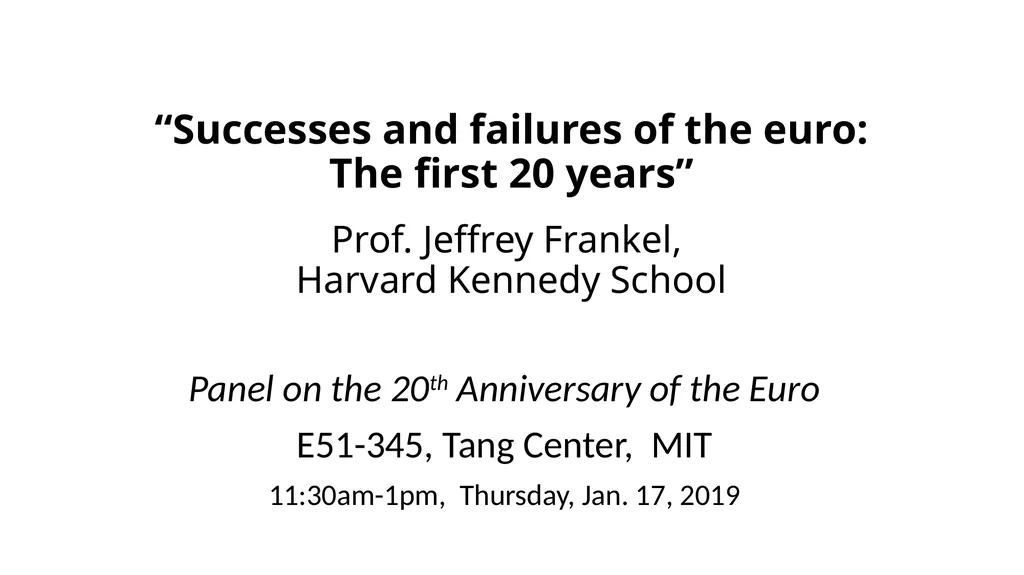
Author : celsa-spraggs | Published Date : 2025-05-23
Description: Successes and failures of the euro: The first 20 years Prof. Jeffrey Frankel, Harvard Kennedy School Panel on the 20th Anniversary of the Euro E51-345, Tang Center, MIT 11:30am-1pm, Thursday, Jan. 17, 2019 Views differed on the two sidesDownload Presentation The PPT/PDF document "" is the property of its rightful owner. Permission is granted to download and print the materials on this website for personal, non-commercial use only, and to display it on your personal computer provided you do not modify the materials and that you retain all copyright notices contained in the materials. By downloading content from our website, you accept the terms of this agreement.
Here is the link to download the presentation.
"“Successes and failures of the euro: The first 20"The content belongs to its owner. You may download and print it for personal use, without modification, and keep all copyright notices. By downloading, you agree to these terms.













